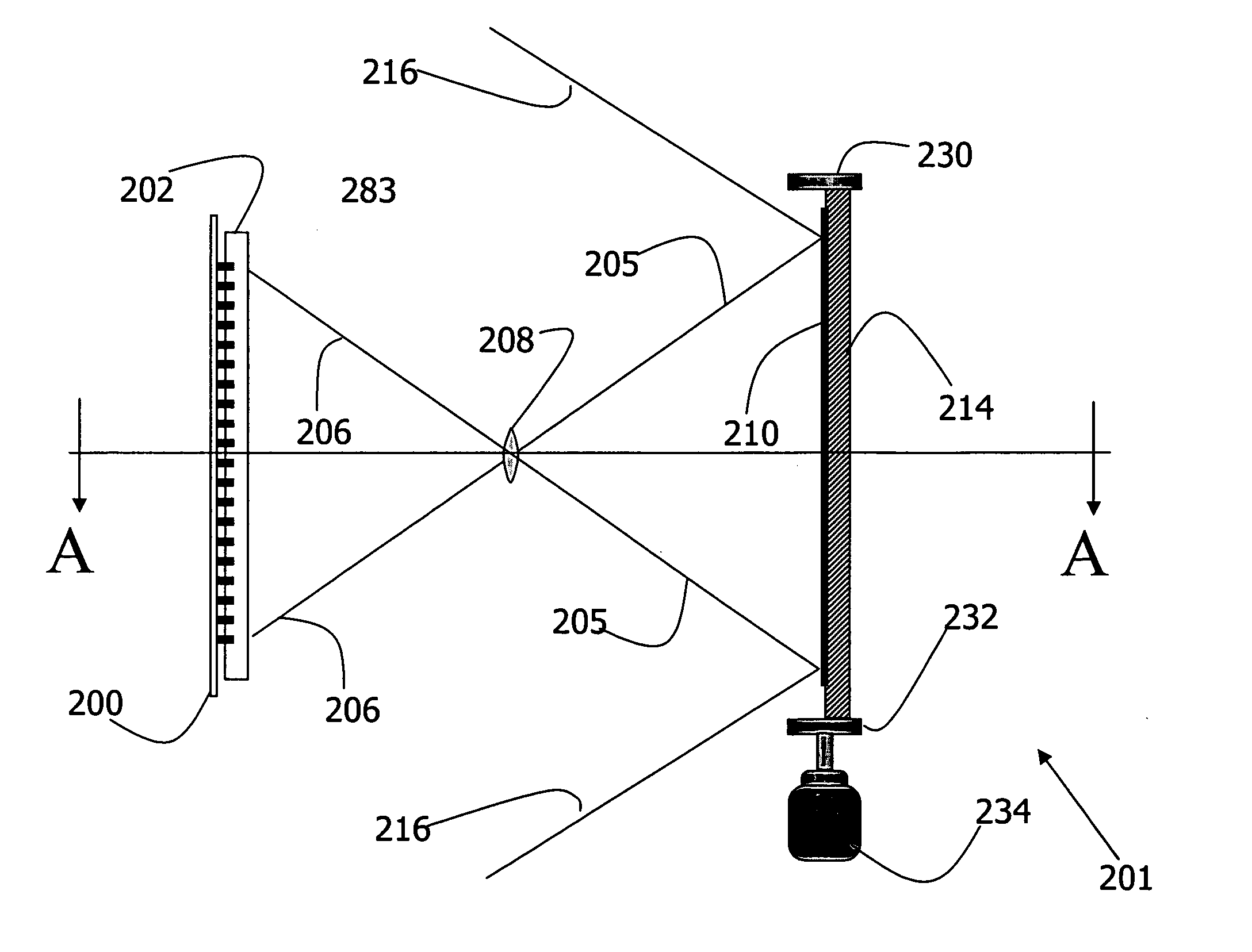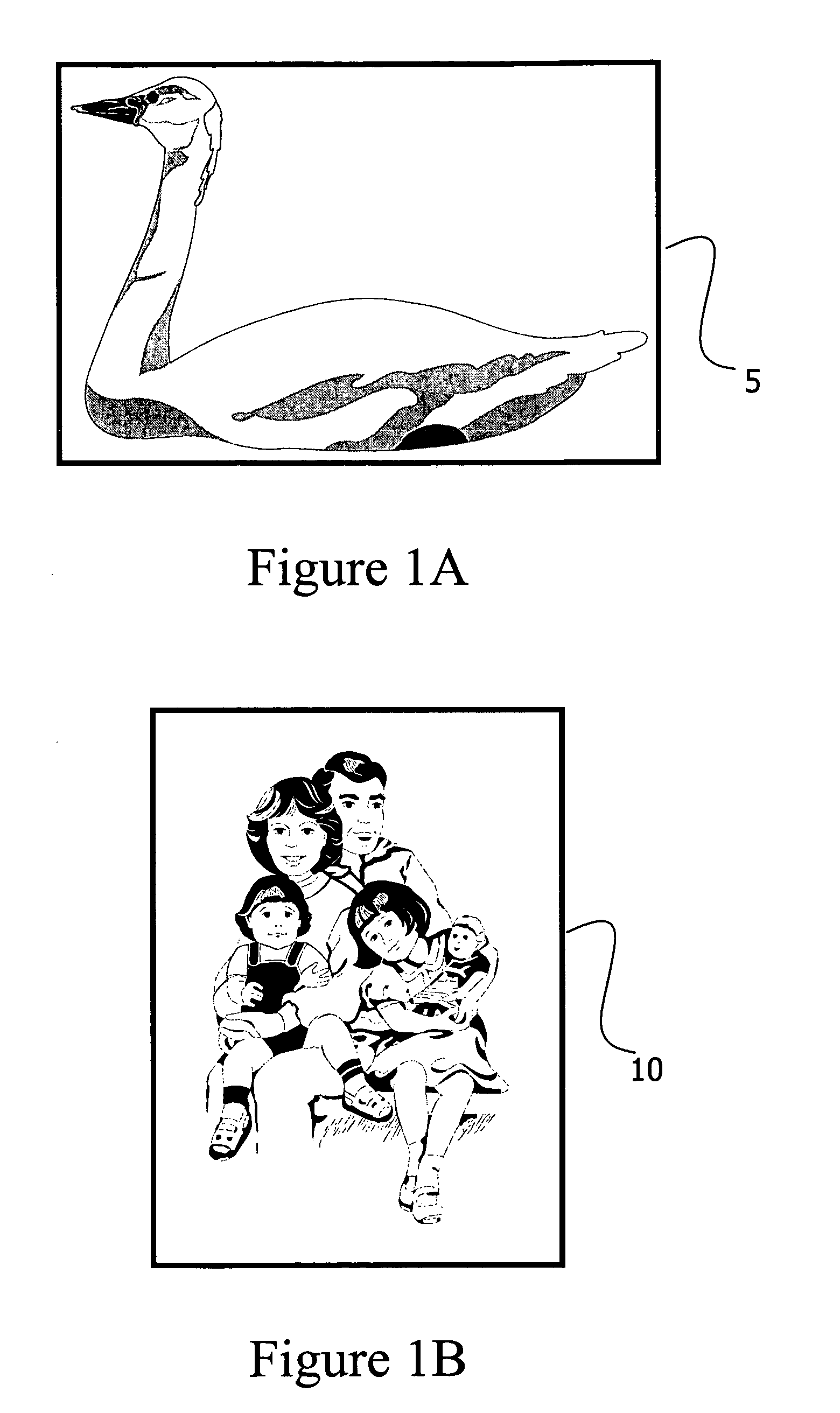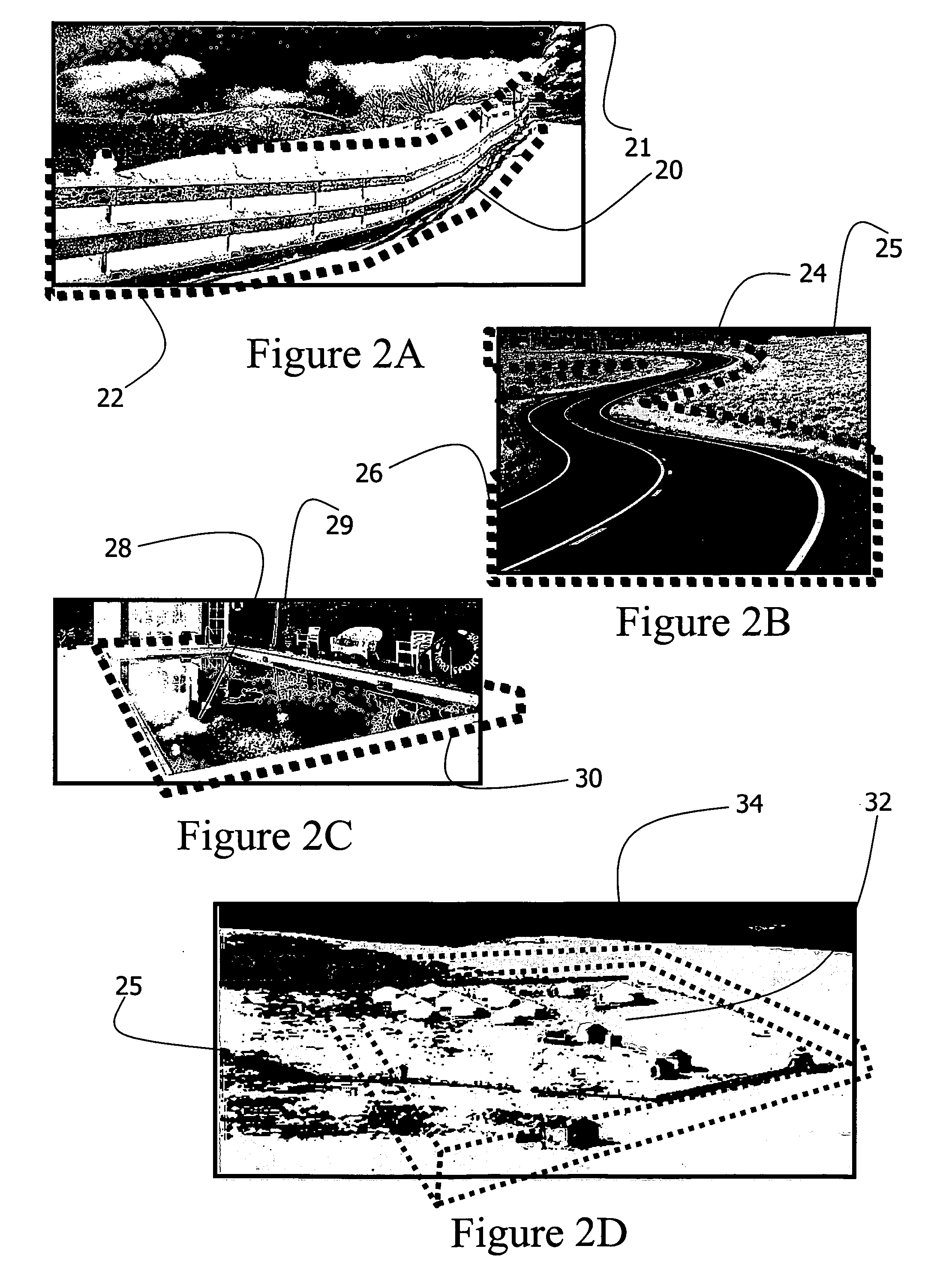Digital camera with non-uniform image resolution
a digital camera and resolution technology, applied in the field of digital cameras, can solve the problems of image quality degradation, large data processing power of jpeg and mpeg type compression, etc., and achieve the effects of increasing the resolution of the ball area, increasing the number of pixels, and uniform width
- Summary
- Abstract
- Description
- Claims
- Application Information
AI Technical Summary
Benefits of technology
Problems solved by technology
Method used
Image
Examples
Embodiment Construction
[0074] Reference will now be made in detail to the preferred embodiments of the present invention, examples of which are illustrated in the accompanying drawings. For clarity, corresponding features are consistently labeled across the various views of the invention provided in the figures.
[0075] Turning to FIG. 1A. A rectangular scene with proportions of 3:4 is shown. The frame 5 is in horizontal or landscape orientation. This is the common proportion of images, and many cameras are built to provide a frame in this proportion. FIG. 2 shows another rectangular scene, this time with proportions of 4:3. The frame 10 is in vertical or portrait orientation. The choice between portrait and landscape is the only choice of field shape that is typically available using a conventional camera.
[0076] Turning now to FIG. 2A, a scene comprising a fence 20 is shown. The fence 20 takes a relatively small portion of frame 21. If the fence 20 were the only image of interest in the frame 21 (such as...
PUM
 Login to View More
Login to View More Abstract
Description
Claims
Application Information
 Login to View More
Login to View More - R&D
- Intellectual Property
- Life Sciences
- Materials
- Tech Scout
- Unparalleled Data Quality
- Higher Quality Content
- 60% Fewer Hallucinations
Browse by: Latest US Patents, China's latest patents, Technical Efficacy Thesaurus, Application Domain, Technology Topic, Popular Technical Reports.
© 2025 PatSnap. All rights reserved.Legal|Privacy policy|Modern Slavery Act Transparency Statement|Sitemap|About US| Contact US: help@patsnap.com



